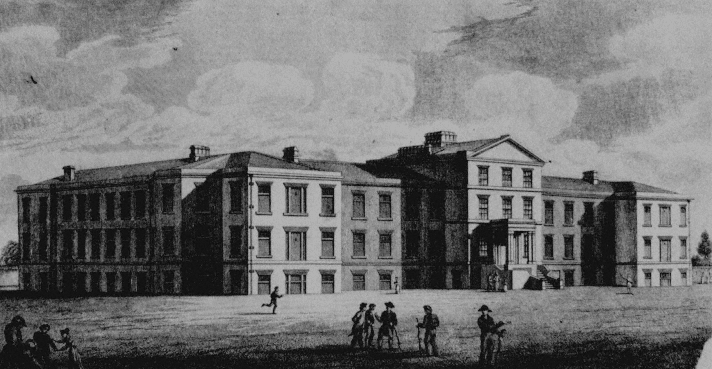William Quay 1778 – 1846
‘..a dignified and worthy Nestonian.’
by Stella Young
This was how local historian George Gleave described William Quay in an article for the Cheshire Observer written in 1899, over fifty years after William Quay’s death (Cheshire Observer – Saturday 16 September 1899. Click here for full article). Born in Neston in 1824, George Gleave was certainly old enough to have known William Quay and his family.
William Quay was born in Neston and baptised on 23rd August, 1778, the oldest child of John Quay and his wife Hannah (nee Thomas). John Quay and Hannah Thomas were married at Neston church on 21st September 1777. John’s occupation when William was born was recorded as ‘labourer’ but by the time their second child was born in 1780 John’s occupation had changed to brewer. While William and his brother and sisters were growing up their father was an innkeeper in Neston possibly at the Nag’s Head which was situated in Neston where the HSBC bank now stands. When John died in 1799 his wife Hannah continued as licensee for a few years.
William began his career as a joiner and this was his trade when he married Betty Harris at St Anne’s Church in Liverpool on 19th September 1805. His mother, Hannah, died the following year and she was buried in Neston on 30th June. In her will she named her daughter Mary, William’s sister, as executrix and left each of her surviving children, William, Mary, John, Hannah and Nancy, £25 each. The residue of her estate she left to her daughter Mary. Mary continued as licensee for a short time until her marriage to Lemuel Welch, a Neston joiner, on 15th October 1807. William’s brother, John, became a shoemaker and left Neston to live in Forde, Shropshire shortly after his marriage to Elizabeth Edwards in 1810. William’s sister, Nancy, also moved away from Neston to Birkenhead after marrying grocer John Waring in Bebington in 1813.
In the same article Gleave describes William as ‘a man of exceptional energy and enterprise’. Although he was originally a joiner by trade during his working life he was a successful builder, an estate agent, an auctioneer and a farmer. George Gleave recalls that he had a yard in Raby Lane opposite Londsdale’s school where he employed sawyers, joiners and wheelwrights. He was one of the contractors employed by Joseph Hayes Lyon in the building of Ashfield Hall and stables between 1819 and 1821. His largest contract, and possibly the one for which he is best remembered, was for the building of the Asylum at Chester. Work began in March 1827 and the building was completed in September 1829.
Following the Poor Law Amendment Act in 1834 the provision of relief for the poor in Neston, along with other Wirral townships, became the responsibility of the Wirral Poor Law Union. In 1836 the Wirral Union invited contractors to tender for the building of a workhouse at Clatterbridge to accommodate 130 people initially increasing later to 200. William Quay was the successful contractor.









